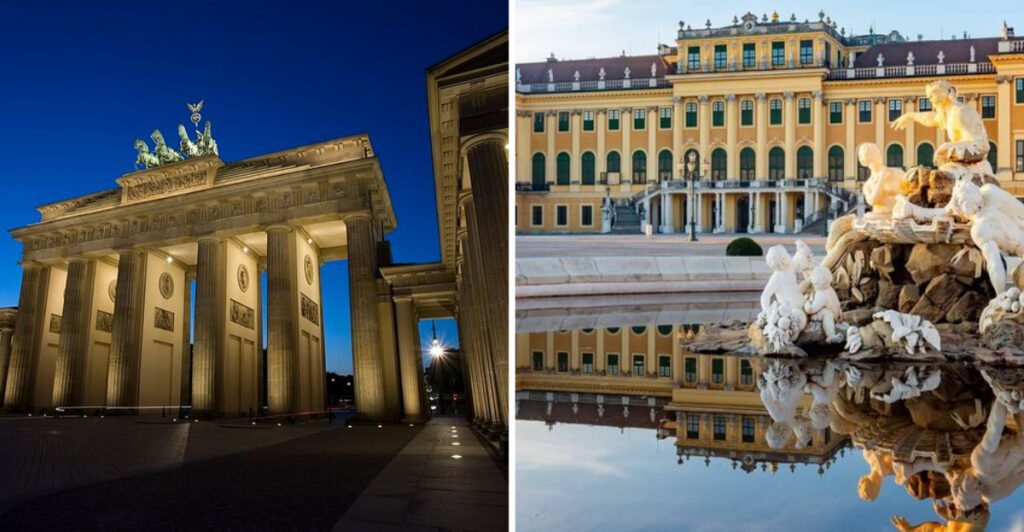Europe, a continent steeped in history and brimming with culture, is home to some of the world’s most iconic monuments. From the ancient ruins of Rome to the imperial grandeur of Vienna, each site tells a story of a bygone era. This journey across Europe takes you through a tapestry of architectural marvels, each more awe-inspiring than the last. Prepare to be captivated by the beauty, history, and diversity of these must-see European monuments. Here’s a curated list of 25 unmissable sites that every traveler should explore at least once in their lifetime.
Colosseum, Rome
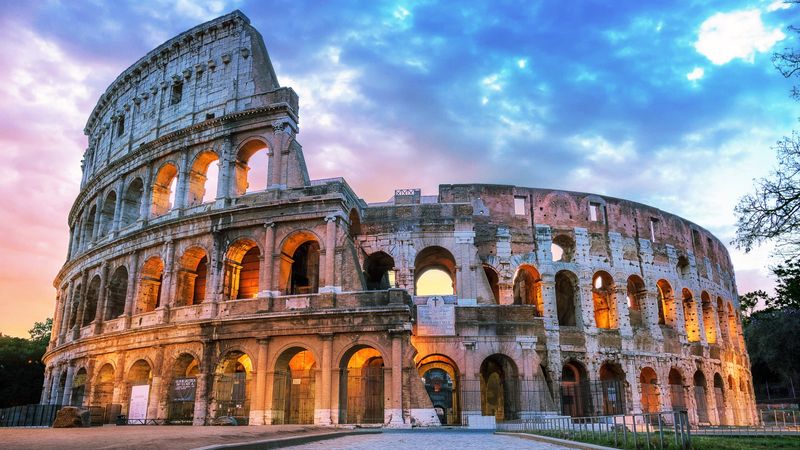
The Colosseum in Rome stands as a testament to the ingenuity of Roman engineering. With its massive amphitheater and iconic arches, it once hosted gladiatorial contests that drew in thousands of spectators. The structure’s sheer size and historical significance make it a must-visit for history buffs.
Walking through its ancient corridors, one can almost hear the echoes of the past. The Colosseum is a symbol of Rome’s imperial power and architectural prowess, reflecting the grandeur of an era long gone.
Did you know? It’s estimated that over 500,000 people and a million animals died within its walls.
Eiffel Tower, Paris
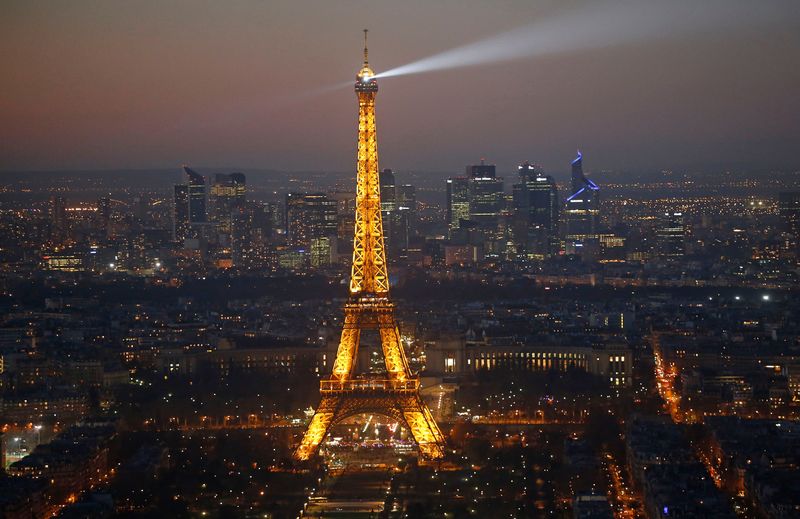
The Eiffel Tower, a symbol of romance and French innovation, pierces the Parisian sky with its iron lattice structure. Originally criticized, it has become the most visited monument globally. Standing beneath its towering presence is a surreal experience.
The view from the top offers a breathtaking panorama of Paris, making it a photographer’s dream. Gustave Eiffel’s masterpiece is celebrated not just for its design, but as a beacon of human achievement.
A fun fact: It was initially intended to be dismantled after 20 years, but its utility as a radio antenna saved it from destruction.
Sagrada Familia, Barcelona
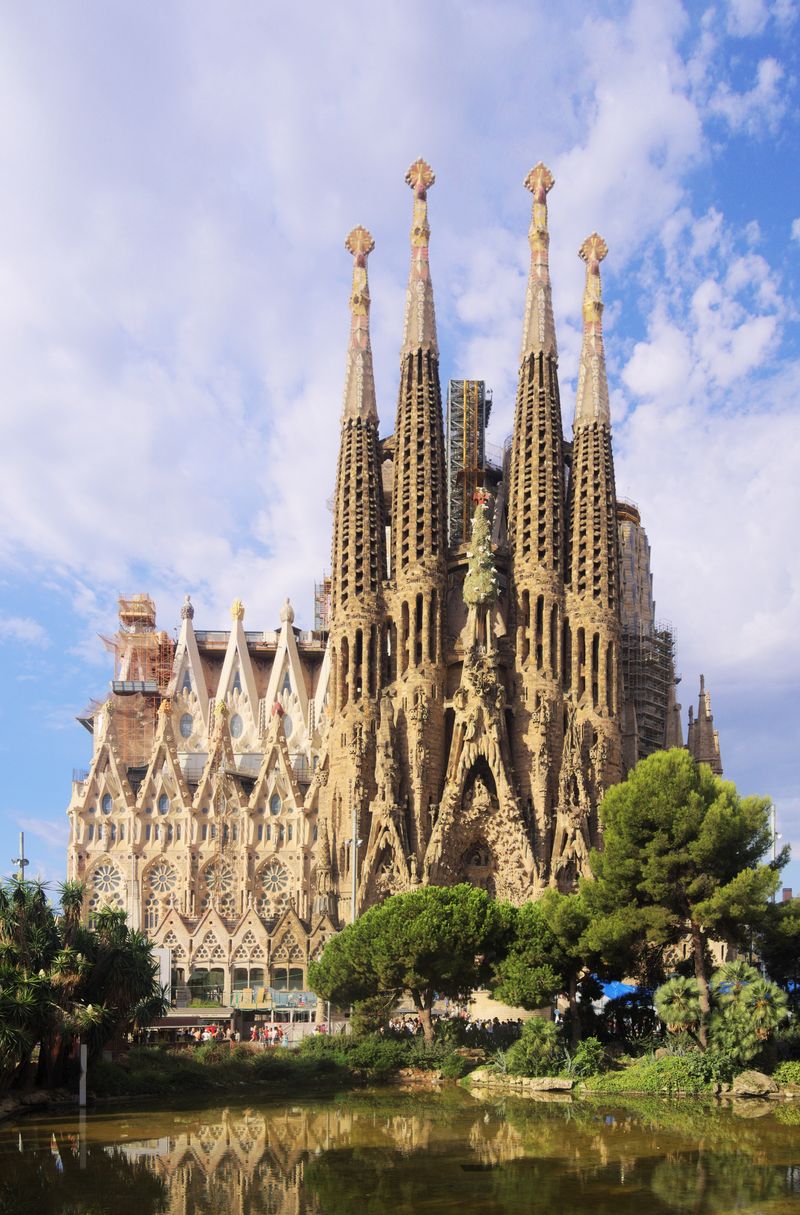
Antoni Gaudí’s Sagrada Familia in Barcelona defies conventional architectural norms. Its intricate facades and towering spires create an almost otherworldly appearance. Although unfinished, it draws millions who marvel at its uniqueness and Gaudí’s genius.
Inside, the basilica resembles a forest, with towering columns and colorful stained glass windows. Every detail tells a spiritual story, reflecting Gaudí’s deep faith.
Curiously, the church has been under construction since 1882, and it’s expected to be completed by 2026, marking the centenary of Gaudí’s death.
Acropolis, Athens
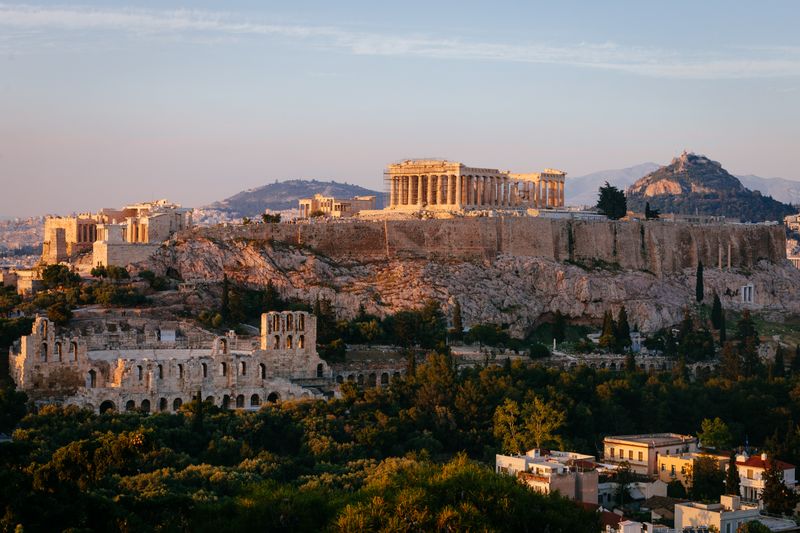
Perched high above Athens, the Acropolis commands a majestic presence. Its ancient ruins, including the Parthenon, are symbols of classical Greek civilization and democracy. Every stone whispers stories of the philosophers and statesmen who once walked its grounds.
The panoramic view of Athens from the Acropolis is simply mesmerizing. The site’s cultural and historical significance is unparalleled, offering insights into Greek heritage.
Did you know? The Parthenon was originally a treasury and has served multiple roles, including a Christian church and a mosque over the centuries.
Stonehenge, England
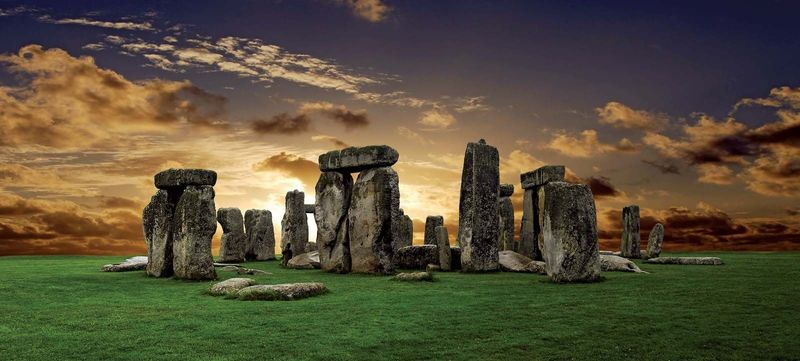
Stonehenge, shrouded in mystery, stands as a testament to prehistoric ingenuity on the Salisbury Plain. The massive stone circle, erected around 2500 BC, continues to intrigue archaeologists and visitors alike.
Its purpose remains speculative, ranging from a religious site to an astronomical observatory. Walking around the stones, one feels a connection to ancient rituals and cosmic alignments.
A curious fact: The stones are aligned with the sunrise of the summer solstice, revealing the builders’ advanced understanding of astronomy.
Brandenburg Gate, Berlin
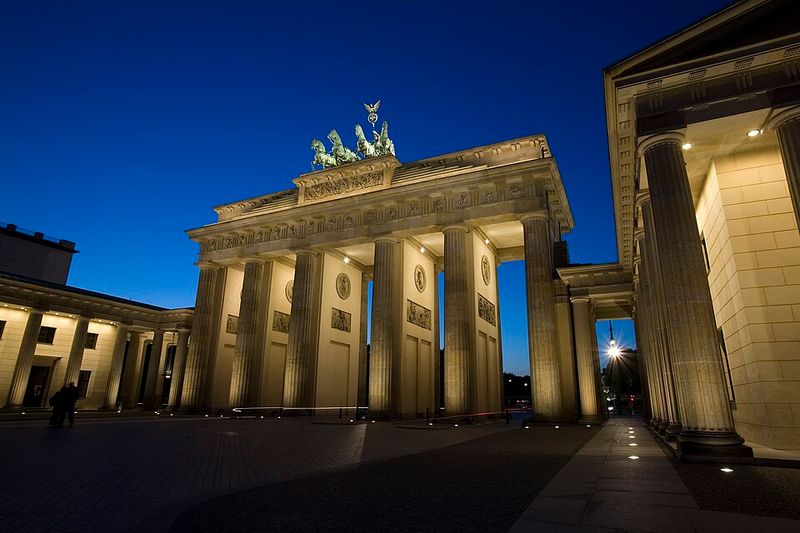
The Brandenburg Gate in Berlin symbolizes unity and peace. Once a symbol of division during the Cold War, it now stands as a testament to Germany’s reunification.
Its neoclassical design, inspired by the Acropolis, adds to its grandeur. Visitors are drawn to its historical significance and the stories it holds.
Interestingly, Napoleon once took the Quadriga, the victory statue atop the gate, to Paris. It was returned after his defeat, symbolizing a resilient spirit.
Notre-Dame Cathedral, Paris
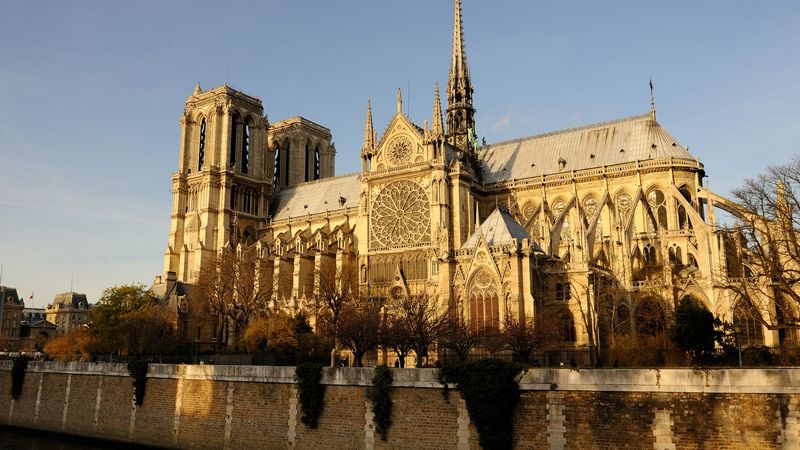
Notre-Dame Cathedral captures the essence of Gothic architecture in the heart of Paris. Its iconic spires, flying buttresses, and stunning rose windows make it an architectural masterpiece.
The interior, with its vast nave and impressive organ, exudes a serene ambiance. It’s a place where history and art merge, echoing tales of medieval Paris.
A charming fact: Victor Hugo’s “The Hunchback of Notre-Dame” was instrumental in sparking interest and efforts to restore the cathedral in the 19th century.
Leaning Tower of Pisa
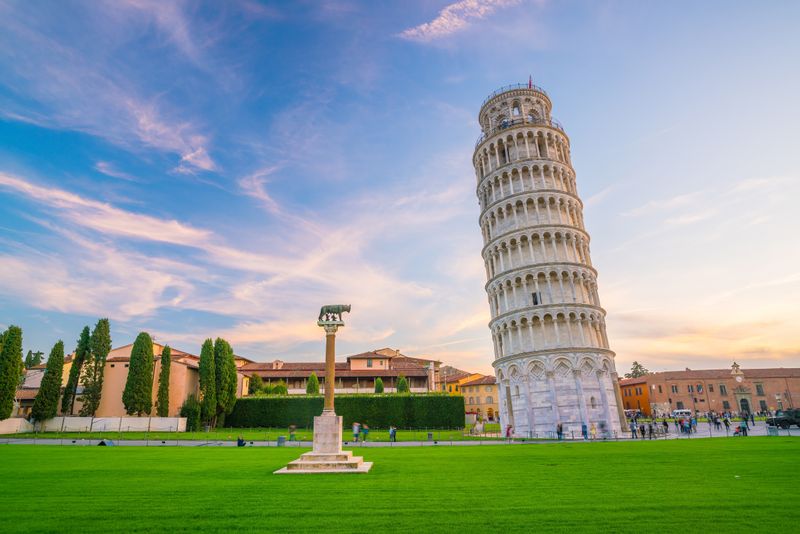
The Leaning Tower of Pisa is more than just a structural anomaly; it’s a symbol of architectural perseverance. Its unintended tilt, due to unstable foundation soil, has made it a global icon.
Visitors flock to capture playful photos with the tower, marveling at its resilience and beauty. It’s an embodiment of Pisa’s rich medieval history.
Did you know? Efforts to stabilize the tower have been ongoing for centuries, and it’s now safe for visitors to climb its steps.
St. Peter’s Basilica, Vatican City
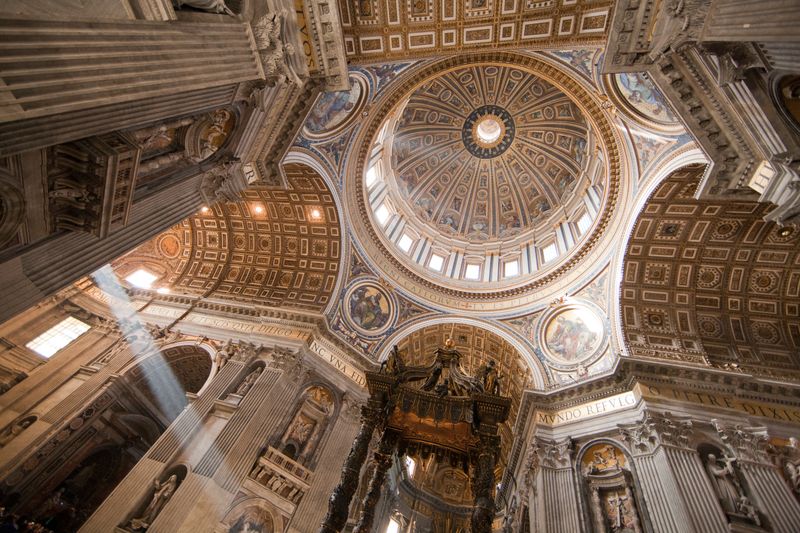
St. Peter’s Basilica in Vatican City is a masterpiece of Renaissance architecture. Its majestic dome dominates the skyline, symbolizing the heart of Catholicism.
Inside, the opulence and artistry leave visitors in awe. From Michelangelo’s Pietà to Bernini’s Baldacchino, the basilica is a treasure trove of art and spirituality.
Fun fact: The Basilica is traditionally believed to be the burial site of Saint Peter, one of Christ’s Apostles and the first Pope.
Big Ben, London
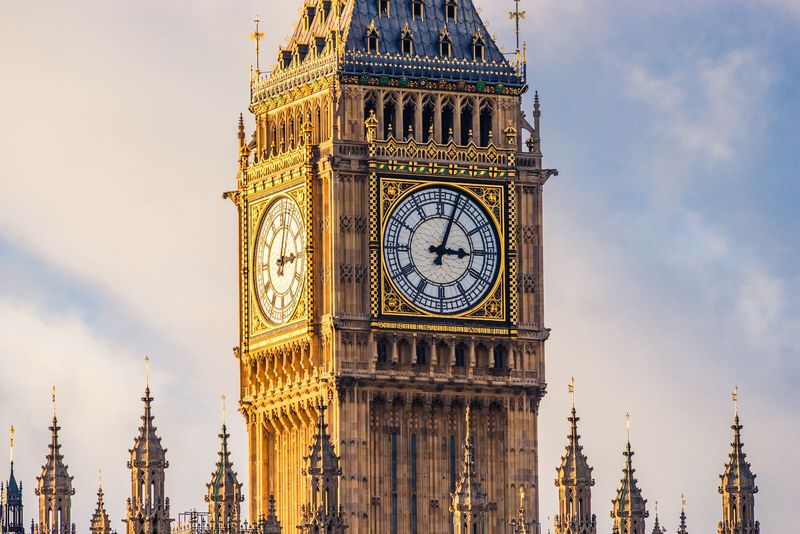
Big Ben, the iconic clock tower of the Palace of Westminster, stands as a symbol of London. Its resonant chimes mark the passage of time in the city.
Although commonly referred to as Big Ben, the name originally belonged only to the Great Bell inside. The tower’s Gothic Revival design adds to its imposing presence.
Did you know? The clock has rarely stopped, even during WWII bombings, underscoring its resilience and significance.
Prague Castle, Czech Republic
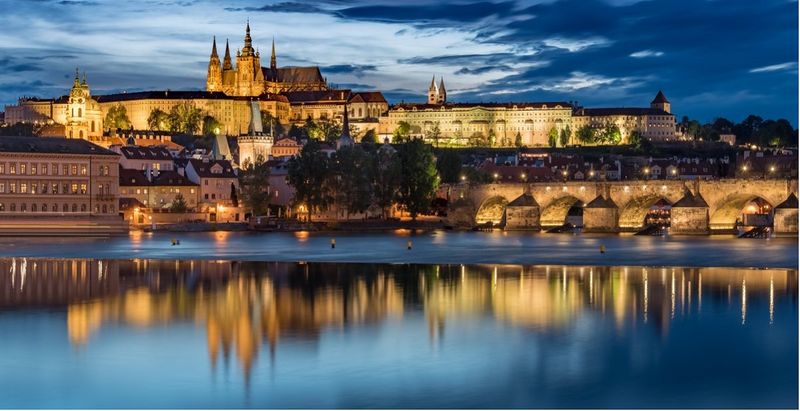
Perched on a hill overlooking the Vltava River, Prague Castle is a sprawling complex that narrates the city’s rich history. As one of the largest castle complexes in the world, it houses palaces, churches, and gardens.
Each corner of the castle reveals a tale of Bohemian kings and emperors. The magnificent St. Vitus Cathedral, with its beautiful stained glass, is a highlight.
Fun fact: The castle has housed the crown jewels of the Bohemian Kingdom for centuries, adding to its allure and importance.
Palace of Versailles, France
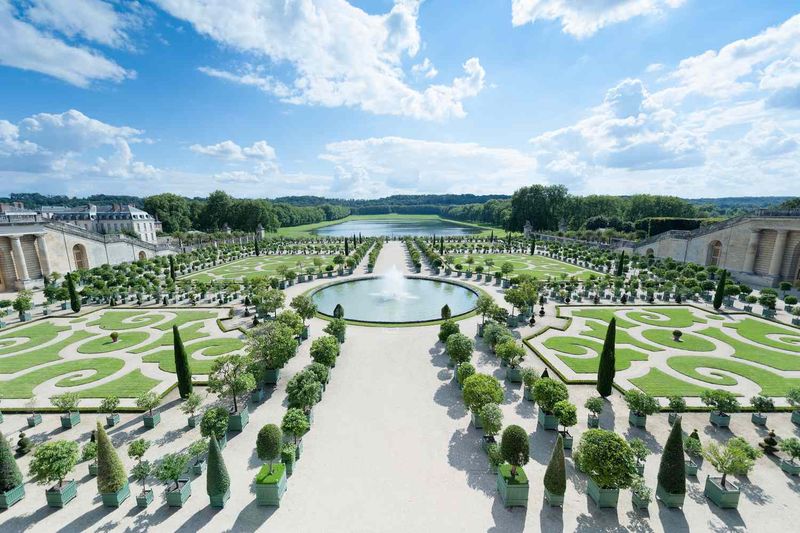
The Palace of Versailles, with its opulent halls and expansive gardens, embodies the grandeur of the French monarchy. Once the residence of Louis XIV, its lavish design reflects the king’s desire to showcase absolute power.
Visitors can explore the Hall of Mirrors, where world-changing treaties were signed, or stroll through the meticulously manicured gardens.
A fun tidbit: The palace’s extensive grounds once housed a zoo and a farm, demonstrating the king’s whimsy and the palace’s multifunctional use.
Tower of London, England
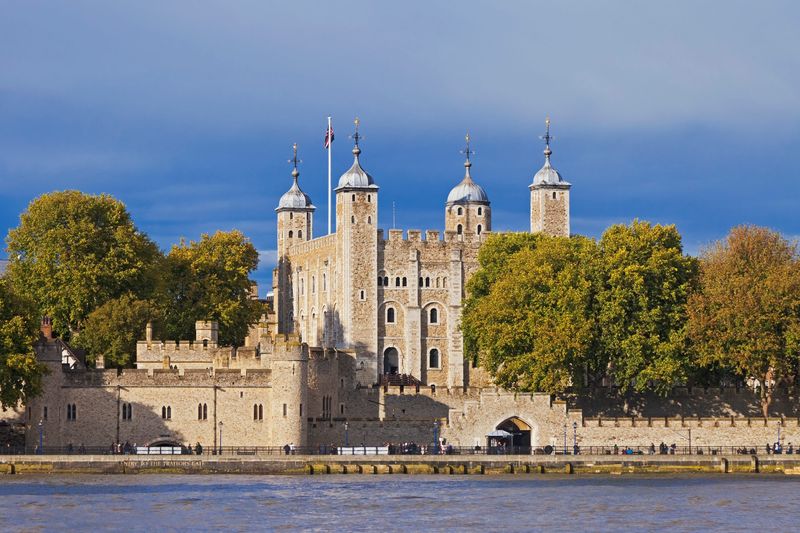
The Tower of London, a fortress with a dark and storied past, has stood by the River Thames since the 11th century. It has served as a royal palace, prison, and treasury.
Exploring its grounds, visitors uncover tales of intrigue, treachery, and royalty. The Crown Jewels, housed within, draw awe and admiration.
Intriguing fact: Legend has it that if the resident ravens ever leave the tower, the kingdom will fall. To prevent this, their wings are clipped.
Grand-Place, Brussels
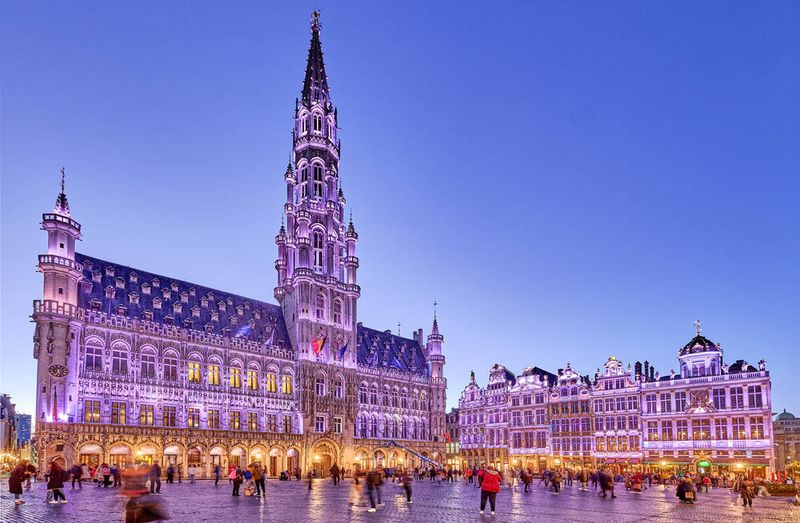
Grand-Place, the central square of Brussels, dazzles with its ornate guildhalls and historic town hall. It’s a UNESCO World Heritage site and a vibrant hub of cultural events.
Every two years, the square is adorned with a colorful flower carpet, attracting thousands of visitors. The Gothic and Baroque architecture speaks of the city’s commercial prosperity.
Did you know? Victor Hugo once described it as the most beautiful square in the world, and it’s easy to see why when standing amidst its splendor.
Florence Cathedral, Italy
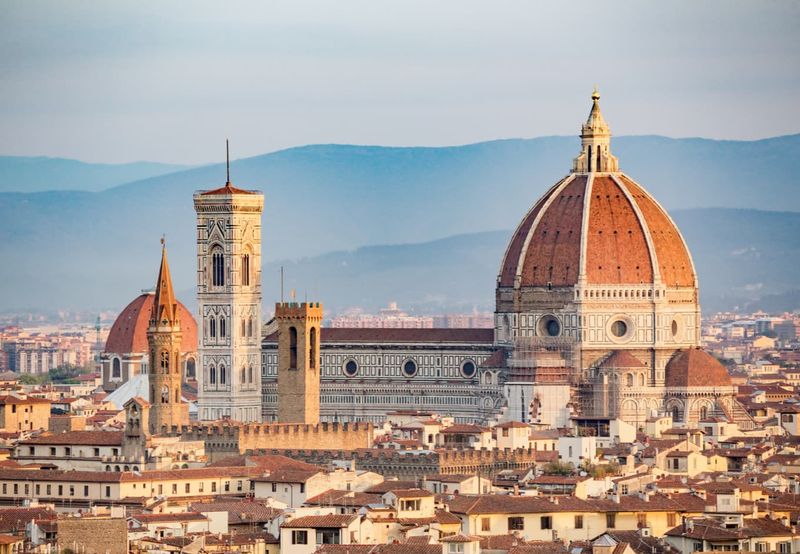
Florence Cathedral, with its striking red-tiled dome designed by Brunelleschi, dominates the city’s skyline. The intricate marble facade and the grandeur of the interior reflect the Renaissance spirit.
Climbing to the top offers a panoramic view of Florence, an experience cherished by visitors. The cathedral is a testament to the artistic and architectural achievements of the time.
Interesting tidbit: The construction of the dome was a feat of engineering innovation, using techniques that were revolutionary in the 15th century.
Charles Bridge, Prague
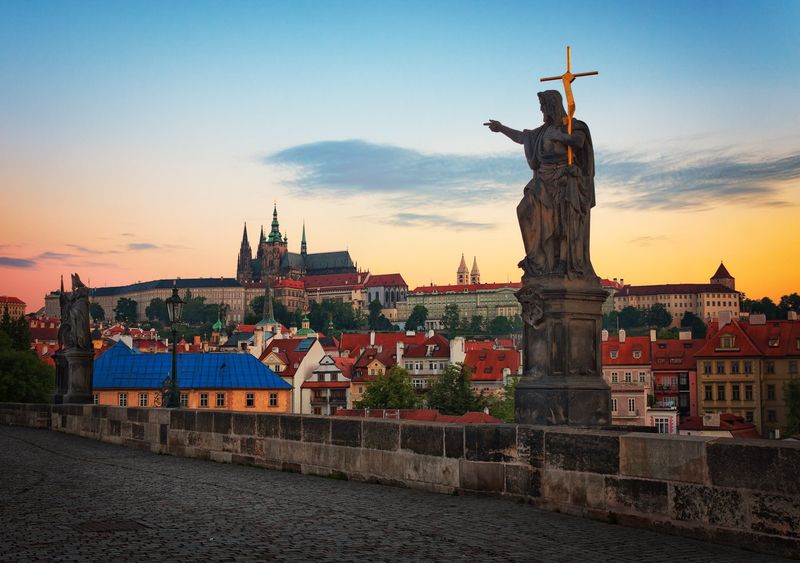
Charles Bridge, a medieval stone arch bridge in Prague, spans the Vltava River, connecting the Old Town with the Lesser Town. Lined with statues of saints, it offers a walk through history.
The bridge is a favorite spot for artists and photographers, especially at sunrise and sunset when the lighting is magical. It’s a place where legends and lore intertwine with the city’s vibrant life.
A fascinating fact: Construction began in 1357 under King Charles IV, and it’s believed that eggs were mixed into the mortar to strengthen it.
Neuschwanstein Castle, Germany
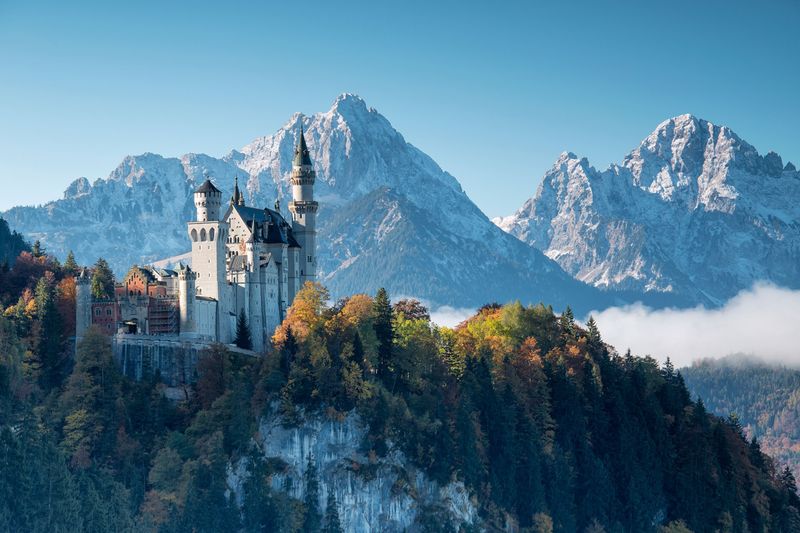
Nestled in the Bavarian Alps, Neuschwanstein Castle is the epitome of fairy-tale romance. Commissioned by King Ludwig II, its whimsical design inspired Disney’s Sleeping Beauty Castle.
The interior is as opulent as its exterior, with intricate woodwork and murals depicting Wagner’s operas. It’s a dream come alive against a backdrop of snow-capped mountains.
Did you know? Although it looks medieval, the castle was built in the 19th century, combining romantic fantasy with technological modernity of the time.
Trevi Fountain, Rome
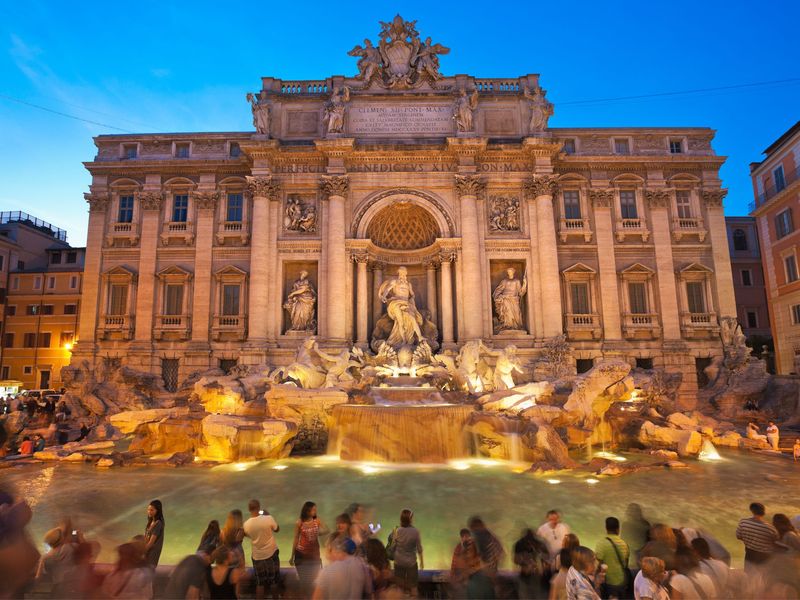
The Trevi Fountain, an opulent baroque masterpiece, is Rome’s largest and most famous fountain. As tradition goes, tossing a coin into its waters ensures a return to the Eternal City.
The sculptures, depicting Neptune and his chariot, are a celebration of the sea’s triumphs. The sound of cascading water adds to its allure, drawing crowds day and night.
Fun fact: It’s estimated that around 3,000 euros are thrown into the fountain daily, which is donated to charity to help Rome’s needy.
Milan Cathedral, Italy
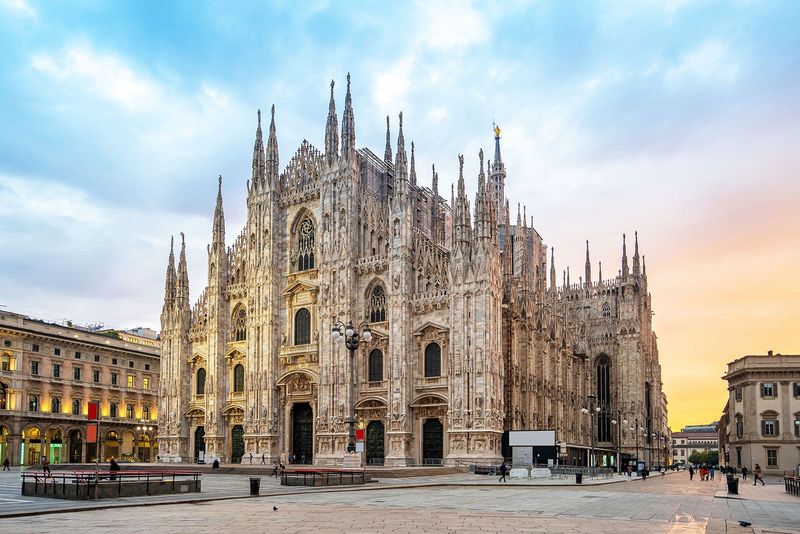
The Milan Cathedral, an imposing Gothic structure, boasts the most statues of any building in the world. Its white marble facade and intricate spires make it a marvel of architectural achievement.
Visitors can ascend to the rooftop terraces, where breathtaking views of Milan and the Alps await. It’s a place where history, art, and spirituality converge magnificently.
An interesting tidbit: The construction took nearly six centuries, and it remains a symbol of Milanese perseverance and devotion.
Anne Frank House, Amsterdam
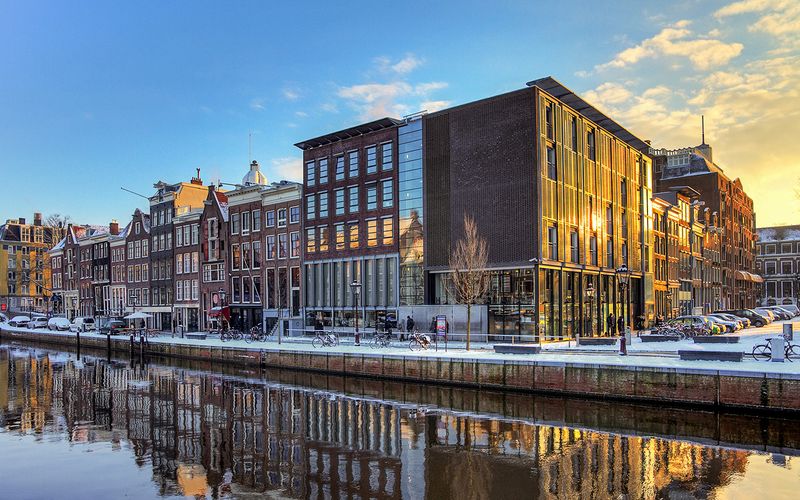
The Anne Frank House in Amsterdam is a poignant reminder of history’s darkest period. Visitors walk through the hidden annex where Anne wrote her famous diary, gaining insight into her life and legacy.
The museum offers a powerful narrative of hope and resilience amidst adversity. It’s a place of reflection and education, ensuring that the lessons of the past are not forgotten.
Did you know? Anne’s father, Otto Frank, was the only member of the family to survive the Holocaust, and he published her diary posthumously.
Santorini Caldera, Greece

The Santorini Caldera, a natural wonder created by a volcanic eruption, offers breathtaking views of white-washed buildings against a backdrop of azure sea. It’s a paradise for romantics and adventurers alike.
The sunsets over the caldera are unmatched, casting a golden glow over the island. It’s an experience that leaves visitors spellbound, capturing the essence of Greek beauty.
Fun fact: The eruption that formed the caldera may have inspired the legend of Atlantis, adding to its mystique and allure.
Schonbrunn Palace, Vienna
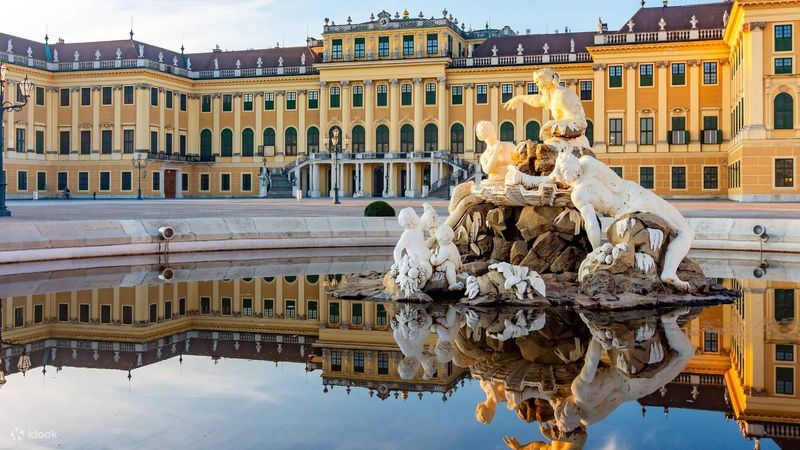
Schonbrunn Palace, a baroque masterpiece, served as the summer residence of the Habsburgs. Its opulent rooms and vast gardens reflect imperial grandeur and elegance.
Visitors can explore the lavish state rooms and the Gloriette, offering panoramic views of Vienna. The palace is a gem of Austrian history and architecture.
Did you know? The world’s oldest zoo, Tiergarten Schonbrunn, is located on the palace grounds, adding a touch of charm to the visit.
Hungarian Parliament Building, Budapest
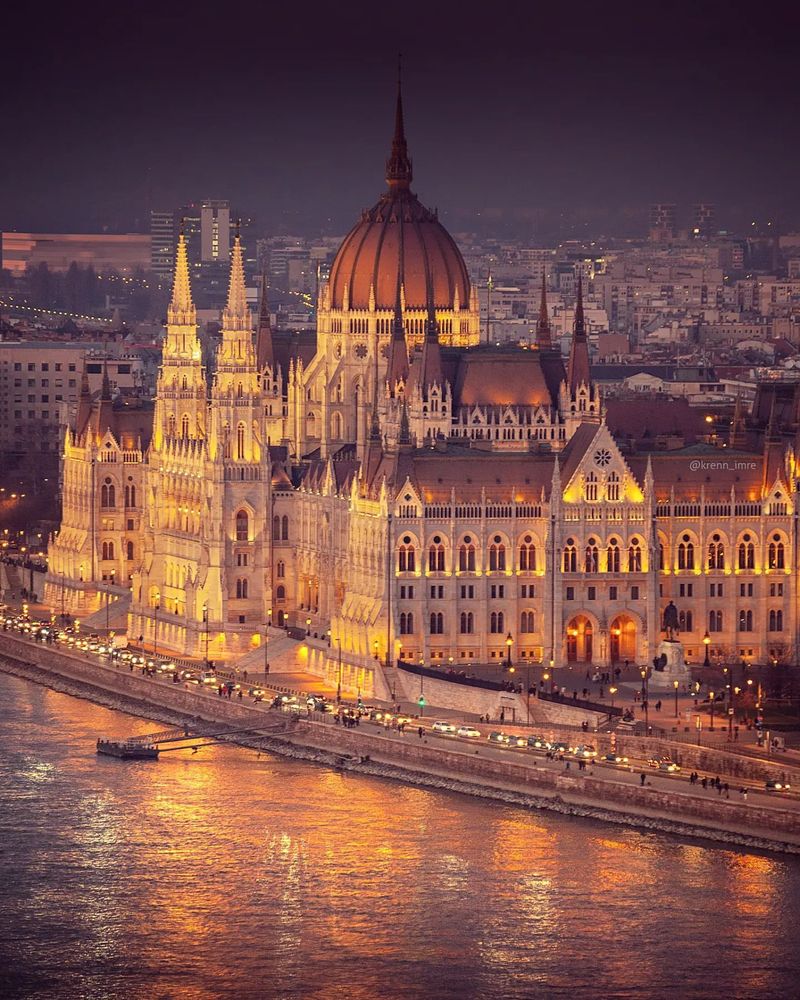
The Hungarian Parliament Building, a neo-Gothic architectural marvel, stands proudly by the Danube River in Budapest. Its intricate facade and grand dome make it a symbol of national pride.
Inside, the grandiose halls and the Holy Crown of Hungary captivate visitors. The building’s elegance reflects Hungary’s rich history and cultural heritage.
A fascinating tidbit: It’s the largest building in Hungary, and its design was inspired by London’s Houses of Parliament, blending historic grandeur with modern functionality.
Pantheon, Rome
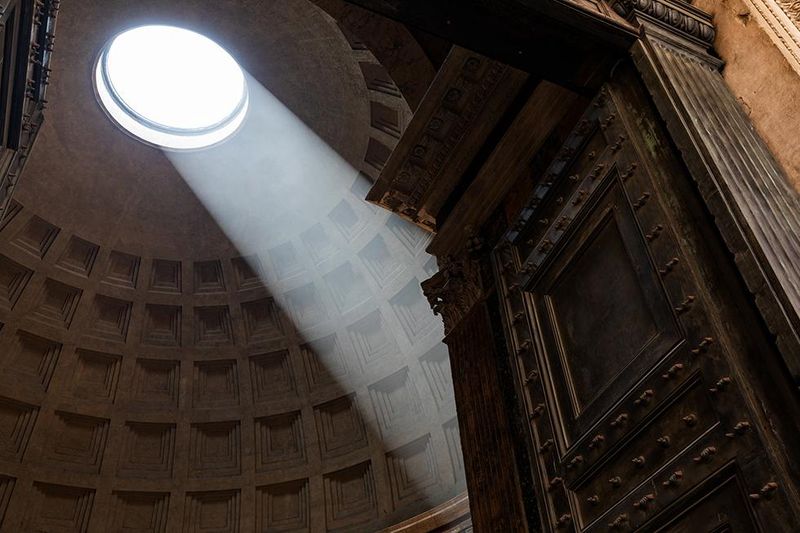
The Pantheon stands as a testament to Rome’s architectural ingenuity. With its massive dome and oculus, it offers a glimpse into ancient engineering. Step inside to admire the harmonious proportions and the play of light that changes throughout the day.
Originally built as a temple for the Roman gods, the Pantheon has served various purposes over the centuries, including as a church. Its preservation is remarkable, making it a must-see.
Did you know? The Pantheon’s dome remains the largest unreinforced concrete dome in the world, a true marvel of ancient construction.
Hofburg Palace, Vienna
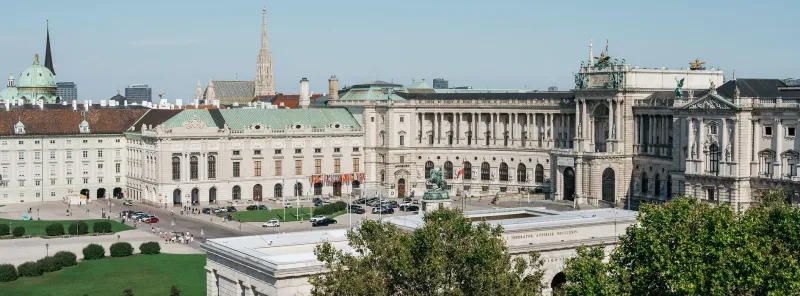
Hofburg Palace is a symbol of imperial grandeur in the heart of Vienna. This sprawling complex served as the winter residence of the Habsburg dynasty. Visitors can explore opulent rooms adorned with exquisite chandeliers and ornate furnishings.
Stroll through the palace gardens, a tranquil escape from the city’s hustle. The Spanish Riding School, located within the palace, offers a unique glimpse into equestrian traditions.
Fun fact: The balcony of the New Castle Wing is where the famous “I am an Austrian” speech by John F. Kennedy took place, cementing its historical significance.

